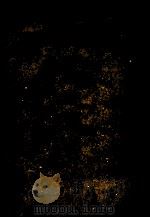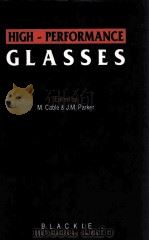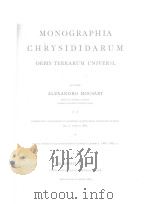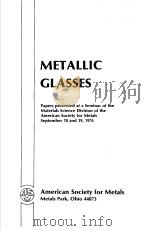《COLOURED GLASSES》
| 作者 | 编者 |
|---|---|
| 出版 | THE SO IETY OF GLASS TECHNOLOG |
| 参考页数 | 541 |
| 出版时间 | 1954(求助前请核对) 目录预览 |
| ISBN号 | 无 — 求助条款 |
| PDF编号 | 812498478(仅供预览,未存储实际文件) |
| 求助格式 | 扫描PDF(若分多册发行,每次仅能受理1册) |
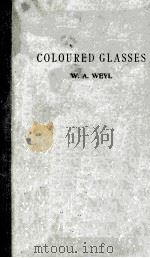
PART Ⅰ.THE CONSTITUTION OF COLOURED GLASSES.3
Ⅰ.THE ORIGIN OF COLOUR IN INORGANIC SUBSTANCES3
Inorganic Chromophores3
The Influence of Solvation on Colour9
The Influence of Adsorption12
The Influence of Temperature on Colour15
Ⅱ.THE CONSTTTUTION OF GLASS17
General Review of the Problem17
Ions as the Building Units of Glasses22
The Principles Governing the Ionic Structure of Crystals and Glasses26
The Atomic Structure of Silica Glass28
The Atomic Structure of Binary and Ternary Silicate Glasses30
The Atomic Structure of Boric Oxide-Containing Glasses33
The Atomic Structure of Phosphate Glasses35
The Role of Al2O3,BeO,ZnO,PbO and TiO2 in Glasses36
Ⅲ.THE CONSTITUTION OF GLASS44
The Replacement of Oxygen by other Elements44
Sulphur and Selenium as Substitutes for Oxygen44
Halogen Ions as Substitutes for Oxygen46
Ⅳ.THE TERMS ACIDITY AND BASICITY IN RELATION TO MODERN THEORY OF STRUCTURE52
Ⅴ.THE CLASSIFICATIONOF GLASSES ACCORDING TO THEIR CHROMOPHORES57
Coloured Glasses with One Colouring Ion59
Coloured Glasses with Chromophore Groups Consisting of Two Ions60
Coloured Glasses with Chromophore Groups Consisting of Three Ions62
Ⅵ.THE CONSTITUTIONOF GLASS AS REVEALED BY COLOUR AND FLUORESCENCE INDICATORS64
The Determination of the State of Oxidation of a Glass by the Indicator Meihod65
The Determination of the Acidity and Basicity of a Glass by the Indicator Method66
The Determination of the Co-ordination Number of an Ion70
Indicators for the General Electric Perturbation of an Ion74
Fluorescence Indicators80
PART Ⅱ.THE COLOURS OF GLASSES PRODUCED BY VARIOUS COLOURING IONS.89
Ⅶ.THE COLOURS PRODUCED BY IRON89
The Influence of the Iron Content on the Technology of a Glass89
General Discussion on Absorption, Transmission and Colour91
A.The Spectral Absorption of Iron Com-pounds in Aqueous Solutions and Glasses91
B.The Blue Colour in Iron-containing Glasses95
C.Colourless Iron Complexes in Glasses97
The Equilibrium between Di-and Tri-valent Iron in Glasses101
A.The Influence of Temperature and Time102
B.The Influence of the Iron Concentration103
C.The Influence of the Composition of the Glass108
D.The Influence of Oxidising and Reducing Agents113
Ⅷ.THE COLOURS PRODUCED BY MANGANESE121
Introduction121
The Nature of the Manganese Colour121
Reactions During the Melting of Manganese Glasses127
The Melting of Manganese Glasses129
Ⅸ.THE COLOURS PRODUCED BY CHROMIUM132
Introduction132
The Colour of Chromium Compounds132
The Nature of the Chromium Colour in Glasses138
The Melting of Chromium Glasses142
Chromium Pink144
Ⅹ.THE COLOURS PRODUCED BY VANADIUM149
Introduction149
The Chemistry of Vanadium Compounds149
Vanadium in Glass151
Ⅺ.THE COLOURS PRODUCED BY COPPER154
Introduction154
The Chemistry of Copper155
The Colour of Cupric Ions in Solutions and Glasses156
The Reduction of Cupric to Cuprous Ions in Aqueous Solutions and Glasses161
The Properties of Copper Glasses163
Ⅻ.THE COLOURS PRODUCED BY COBALT168
Introduction168
The Colour of Cobalt in Crystals and Solutions170
Cobalt Pigments176
Cobalt Glasses179
Influence of Temperature on the Colour of Cobalt Glasses187
Cobalt Glasses as Pyrosols188
The Melting of Cobalt Glasses190
Influence of Infra-RedAbsorption on the Melting and Working Properties of Glasses191
ⅩⅢ.THE COLOURS PRODUCED BY NICKEL197
Introduction197
The Colour of Nickel in Glasses,Crystals and Solution197
ⅩⅣ.THE COLOURS PRODUCED BY URANIUM205
Introduction205
The Chemistry of Uranium Compounds205
Uranium in Glass206
ⅩⅤ.THE COLOURS PRODUCED BY TITANIUM,TUNGSTEN AND MOLYBDENUM212
Ⅰ.Titanium212
Ⅱ.Tungsten and Molybdenum216
ⅩⅥ.THE COLOURRS PRODUCED BY THE OXIDES OF THE RARE-EARTHS ELEMENTS218
Introduction218
The Absorption Spectra of Neodymium and Praseodymium220
Glasses Containing Neodymium and Praseo-dymium221
Some Applications of Neodymium Glasses226
Cerium-Containing Glasses229
PART Ⅲ.THE COLOURS OF GLASSES PRODUCED BY THE NON-METALLIC ELEMENTS: SULPHUR, SELENIUM, TEL-LURIUM, PHOSPHORUS AND CERTAIN OF THEIR COMPOUNDS.237
ⅩⅦ.THE COLOURS PRODUCED BY SULPHUR AND ITS COMPOUNDS237
Historical Review of the So-called Carbon-Amber Glasses237
The Constitution and Colour of Polysulphide Glasses242
The Melting of Carbon-Amber(Sulphur) Glasses252
The Blue Sulphur Glasses257
Glasses Containing the Sulphides of Heavy Metals260
Equilibria between Sulphides and Silicates261
The Striking of Colour in Sulphide Glasses265
The Melting of Sulphide Glasses268
Special Sulphide Colours in Glasses270
The Melting of Cadmium Sulphide Glasses274
Antimony Ruby Glasses275
Miscellaneous other Sulphides in Glasses279
ⅩⅧ.GLASSES COLOURED BY SELENIUM AND SELENIDES282
Elementary Selenium282
The Nature of Selenium Pink282
Reactions during the Melting of Selenium Glasses287
The Melting of Selenium Pink Glasses295
Conclusions on the Use of Selenium in Glass-making301
Glasses Coloured by Polyselenides303
Iron Selenide Glasses304
Selenium Ruby Glasses and the Nature of the Colour308
The Melting of Selenium Ruby Glasses313
Selenium Black Glasscs323
ⅩⅨ.GLASSESCOLOURED BY TELLURIUM AND BY PHOSPHORUS324
Ⅰ.Tellurium324
Ⅱ.Phosphorus325
PART Ⅳ.THE COLOURS PRODUCED BY METAL ATOMS.331
ⅩⅩ.FUNDAMENTALS CONCERNING THE RELATIONSHIP BETWEEN METALS AND GLASSES331
The Formation of Metal Atoms in Glasses331
The Solubility of Metals and the Formation of Pyrosols333
The Influence of Some Constituents on the Solu-bility of Metals in Fused Salts and Glasses339
The Role of Tin Oxide in the Formation of Ruby Glasses343
The Role of Stannous Chloride in the Formation of Silver Mirrors348
ⅩⅪ.THE CRYSTALLISATIONOF METALS FROM THE GLAS MELT352
The Mobility and Diffusion Speed of Metal Atoms in Glasses352
Nucleus Formation and Crystal Growth355
The Theory of Coagulation.von Smoluchow-ski’s Equation360
ⅩⅫ.THE ABSORPTION OF LIGHT BY METALS366
Fundamentals Concerning the Absorption of Light by Metals366
The Scattering of Light369
The Effect of the Nature of the Dispersed Phase on the Absorption of Light by Colloidal Metals371
The Effect of Shape and Internal Structure375
ⅩⅩⅢ.GOLD IN GOLD-RUBY GLASSES380
Historical Introduction380
The Nature of the Ruby Colour381
The Melting of Gold-Ruby Glasses384
The Striking of Gold-Ruby Glasses388
The Basic Types of Gold Dispersion in Glasses391
ⅩⅩⅣ.SILVER IN GLASSES401
Introduction401
The Chemistry of Silver Glasses401
The Melting of Silver Glasses406
The Colour of Silver Glasses406
ⅩⅩⅤ.THE SILVER-STAINING OF GLASSES409
Introduction409
The Fundamentals of the Staining of Glasses by Cementation410
The Effect of the Glass Composition on the Silver Stain418
ⅩⅩⅥ.COPPER IN COPPER-RUBY GLASSES (HEMATINONE AND COPPER AVENTURINE)420
Introduction420
The Nature of the Red Colour Produced by Copper421
The Work of P.Ebell423
The Melting of Copper-Ruby Glasse425
The Role of the Tin in Copper-Ruby Glasses427
The Role of the Copper in Copper-Ruby Glasses428
The Striking of Copper-Ruby Glasses430
ⅩⅩⅦ.THE COPPER STAINING OF GLASSES433
PART Ⅴ.THE FLUORESCENCE, THERMOLUMINESCENCE AND THE SOLARISATION OF GLASS439
ⅩⅩⅧ.THEGENERAL THEORY OF FLUORESCENCE IN GLASSES439
Introduction439
Pseudo-Fluorescence440
The Fundamentals of Fluorescence441
The Excitation Process444
The Lifetime of the Excited State445
Influence of the Type of Binding of the Atoms447
The Quenching of Fluorescence449
The Classification of Fluorescent Glasses452
ⅩⅩⅨ.FLUORESCENT GLASSES453
Glasses Containing Crystalline Fluorescence Centres453
Glasses Containing Energy-Isolated Atoms or Molecules458
Glasses Containing Fluorescent Ions465
The Uses of Fluorescent Glasses491
ⅩⅩⅩ.THERMOLUMINESCENCE495
ⅩⅩⅪ.THE SOLARISATION OF GLASSES497
Fluorescence and Photosensitivity497
The History of Studies on Solarisation498
The Explanation of Solarisation500
The Control of Solarisation507
The Regeneration of Solarised Glasses508
The Solarisation Equilibrium511
Helpful Models for the Study of Solarisation in Glasses513
ⅩⅩⅫ.PRACTICAL APPLICATIONS OF PHOTOSENSITIVE GLASSES515
AUTHOR INDEX522
SUBJECT INDEX529
1954《COLOURED GLASSES》由于是年代较久的资料都绝版了,几乎不可能购买到实物。如果大家为了学习确实需要,可向博主求助其电子版PDF文件(由 1954 THE SO IETY OF GLASS TECHNOLOG 出版的版本) 。对合法合规的求助,我会当即受理并将下载地址发送给你。
高度相关资料
-
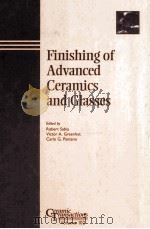
- Finishing of Advanced Ceramics and Glasses
- 1999 The American Ceramic Society
-
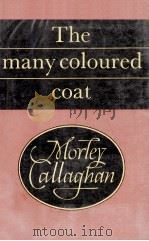
- The many coloured coat
- 1963 MacGibbon & Kee
-

- THE FLAME-COLOURED DRESS AND OTHER STORIES
- 1999 CARCANET
-
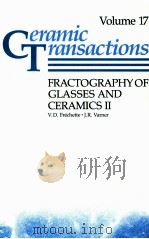
- Fractography of glasses and ceramics Ⅱ
- 1991 Wiley
-
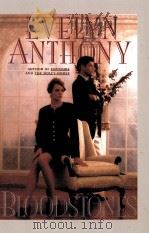
- BLOODSTONES
- 1994 THORNDIKE PRESS CHIVERS PRESS THORNDIKE
-
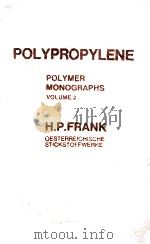
- POLYPROPYLENE
- 1968 GORDON AND BREACH SCIENCE PUBLISHERS
-
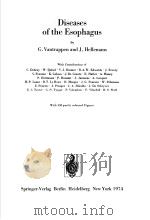
- DISEASES OF THE ESOPHAGUS WITH 358 PARTLY COLOURED FIGURES
- 1974 SPRINGER-VERLAG BERLIN HEIDELBERG
-
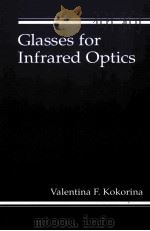
- GLASSES FOR INFRARED OPTICS
- 1996 CRC PRESS
-
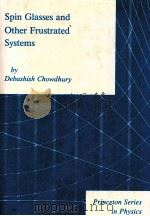
- SPIN GLASSES AND OTHER FRUSTRATED SYSTEMS
- 1986 PRINCETON UNIVERSITY PRESS
提示:百度云已更名为百度网盘(百度盘),天翼云盘、微盘下载地址……暂未提供。➥ PDF文字可复制化或转WORD
